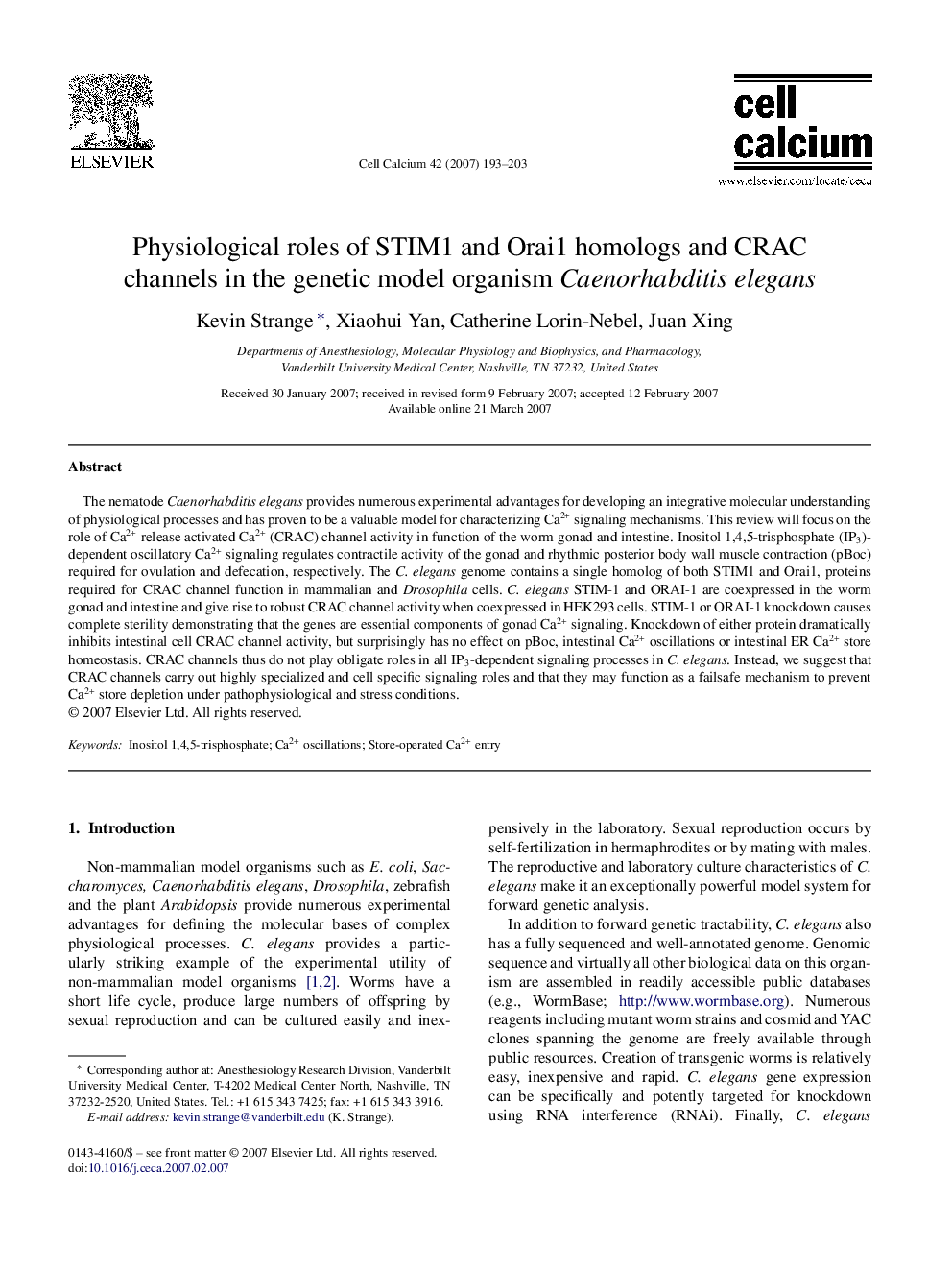| Article ID | Journal | Published Year | Pages | File Type |
|---|---|---|---|---|
| 2166586 | Cell Calcium | 2007 | 11 Pages |
The nematode Caenorhabditis elegans provides numerous experimental advantages for developing an integrative molecular understanding of physiological processes and has proven to be a valuable model for characterizing Ca2+ signaling mechanisms. This review will focus on the role of Ca2+ release activated Ca2+ (CRAC) channel activity in function of the worm gonad and intestine. Inositol 1,4,5-trisphosphate (IP3)-dependent oscillatory Ca2+ signaling regulates contractile activity of the gonad and rhythmic posterior body wall muscle contraction (pBoc) required for ovulation and defecation, respectively. The C. elegans genome contains a single homolog of both STIM1 and Orai1, proteins required for CRAC channel function in mammalian and Drosophila cells. C. elegans STIM-1 and ORAI-1 are coexpressed in the worm gonad and intestine and give rise to robust CRAC channel activity when coexpressed in HEK293 cells. STIM-1 or ORAI-1 knockdown causes complete sterility demonstrating that the genes are essential components of gonad Ca2+ signaling. Knockdown of either protein dramatically inhibits intestinal cell CRAC channel activity, but surprisingly has no effect on pBoc, intestinal Ca2+ oscillations or intestinal ER Ca2+ store homeostasis. CRAC channels thus do not play obligate roles in all IP3-dependent signaling processes in C. elegans. Instead, we suggest that CRAC channels carry out highly specialized and cell specific signaling roles and that they may function as a failsafe mechanism to prevent Ca2+ store depletion under pathophysiological and stress conditions.
